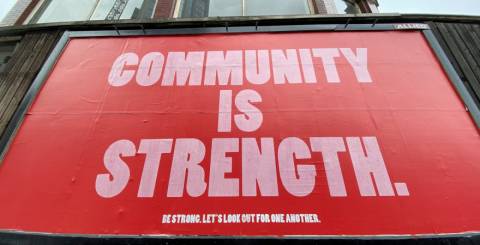Improve Your Community App: Important Features & Functions You Should Know

In the digital age, community apps have become indispensable tools for fostering engagement, collaboration, and a sense of belonging among users. As these platforms grow in popularity, understanding and implementing critical features and functions becomes essential for developers and community managers aiming to create successful, vibrant communities. This post delves into several vital components that can significantly enhance your community app, ensuring it not only attracts but also retains its user base by offering a superior online experience.
-
User Experience and Interface Design: The Gateway to Engagement
The user interface (UI) is often the first point of interaction between your community app and potential users. A well-designed UI should be intuitive, making it easy for users to navigate through the app and find what they're looking for without hassle. Attention to detail in the app’s layout, typography, and colour scheme can significantly affect usability and user satisfaction.
Beyond aesthetics, the user experience (UX) plays a crucial role in keeping users engaged. Incorporating personalization features, such as customizable profiles and adaptive content feeds, make users feel at home within the app. Personalization can extend to notifications, ensuring users receive relevant alerts that encourage them to engage with the community regularly.
To achieve a seamless UX/UI, conduct user testing and gather feedback regularly. This iterative process helps in fine-tuning the app, ensuring it meets the evolving needs and preferences of its community.
-
Communication Tools: Fostering a Connected Community
The essence of a community app lies in its ability to facilitate communication among its members. Offering a variety of communication tools caters to different user preferences, enhancing engagement across the board. Features such as private messaging, public forums, and group chats are staples in this regard.
Implementing real-time communication capabilities, like push notifications for new messages or updates, keeps users informed and engaged.
Moreover, creating spaces within the app for real-time events, such as live chats or video calls, can simulate the dynamics of in-person interactions, further strengthening community bonds.
-
Security and Privacy: Building Trust
In an era where data breaches are not uncommon, security and privacy features are non-negotiable in any community app. Users need to trust that their personal information and interactions within the app are protected. Implementing robust security measures, such as SSL encryption, two-factor authentication, and regular security audits, is crucial.
Privacy settings should empower users to control who can see their profile details, posts, and interactions. Transparent privacy policies and easy-to-navigate privacy settings enhance user trust and compliance with global privacy regulations like GDPR and CCPA.
-
Engaging Content and Activity Feeds: Keeping Users Interested
Content drives engagement in community apps. A dynamic content feed tailored to the interests and preferences of your user base can significantly increase time spent within the app. Features that allow for the easy creation, sharing, and discovery of content—such as articles, videos, and photos—encourage active participation.
Activity feeds that showcase the latest discussions, popular content, and user achievements create a lively and interactive environment. Gamification elements, such as badges, leaderboards, and challenges, can also motivate users to contribute and engage more deeply with the community.
-
Analytics and Feedback Loops: Understanding and Evolving with Your Users
Integrating analytics tools into your community app is vital for understanding user behaviour, preferences, and engagement patterns. This data can inform decisions on new features, content strategies, and community management practices. Regularly reviewing analytics helps in identifying trends and areas for improvement, ensuring the app remains relevant and valuable to its users.
Equally important is establishing direct feedback channels for users to share their thoughts and suggestions. This not only aids in enhancing the app based on user input but also makes users feel valued and heard, fostering a stronger sense of community ownership and loyalty.
Conclusion
Developing a successful community app requires a holistic approach that encompasses intuitive design, robust communication tools, stringent security measures, engaging content, and a commitment to continuous improvement based on analytics and user feedback. Each element plays a crucial role in creating an app that not only draws users in but also keeps them engaged and invested in the community.
As we've explored, successful community app examples often share these core features, adapted to their unique user base and objectives. By focusing on these critical components, developers and community managers can create vibrant, dynamic, and secure spaces online that users return to time and again.
Remember, the journey of improving your community app is ongoing. Technology evolves, and so do user expectations. Staying ahead requires not just implementing current best practices but also anticipating future trends and adapting to them. Engage with your users, learn from them, and let their needs and feedback guide the evolution of your app. With a user-centric approach and a commitment to excellence, your community app can become a thriving digital ecosystem that brings people together in meaningful ways.
Similar Articles
Explore how non-profit councils enhance lives of individuals with developmental disabilities through advocacy, education, and community programs, fostering inclusion and empowerment.
Did you know that approximately 7.3 million individuals received disabled worker insurance from Social Security as of April 2024? Beneficiaries can receive monthly payments that are intended to help cover living expenses while they are unable to work.
Discover the benefits of 55+ communities designed for active, engaging lifestyles. Learn how to choose the right fit for your needs, preferences, and budget.
At first glance, the humble shipping container might not look like much: just a simple steel box we pack things into for transportation. Take a closer look, however, and you’ll realize that this seemingly modest box has had a profound effect on our world, becoming an integral part of the modern society we currently live in.




